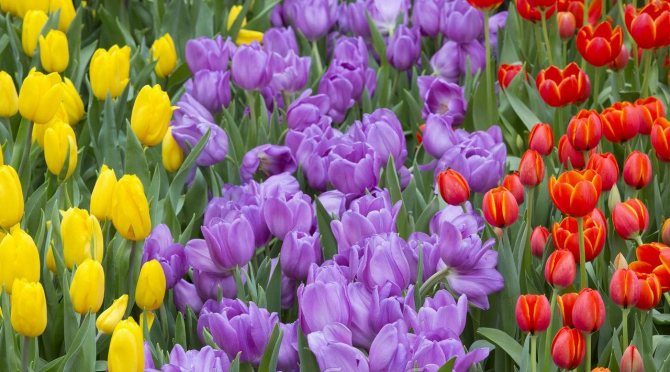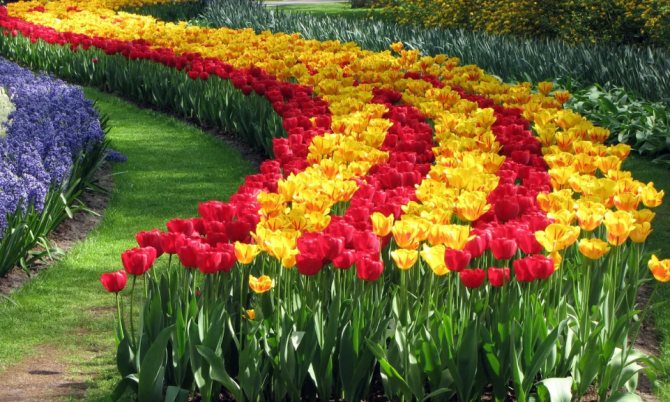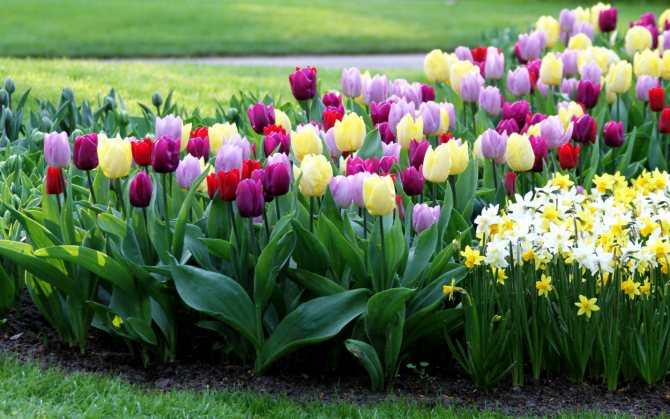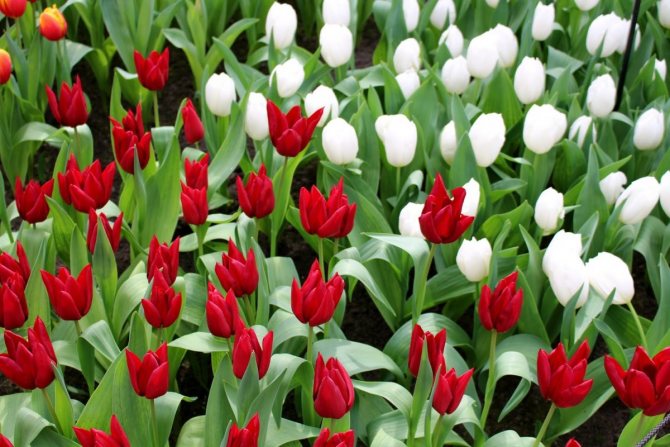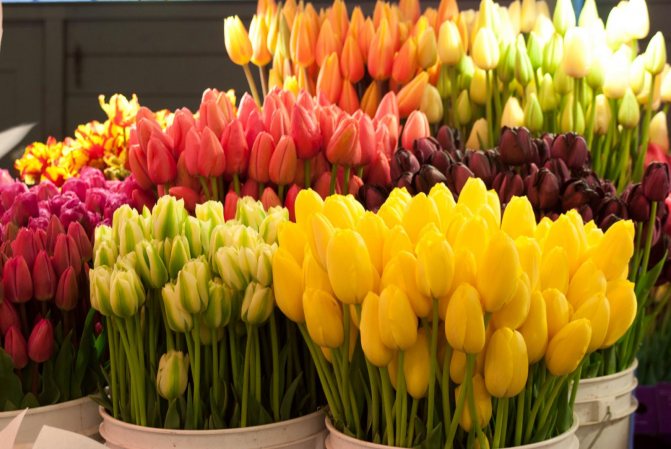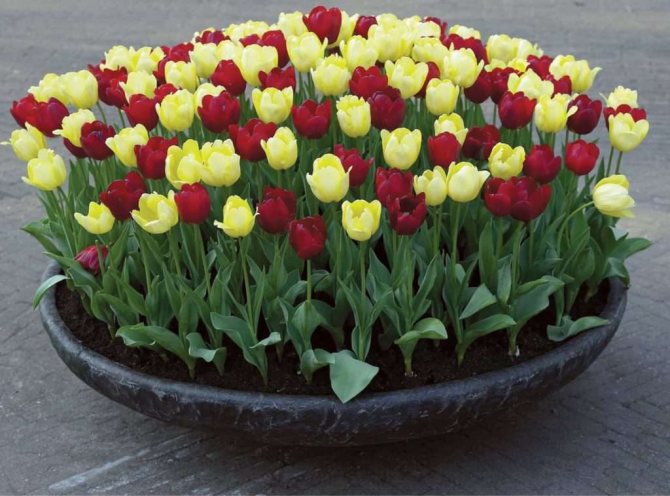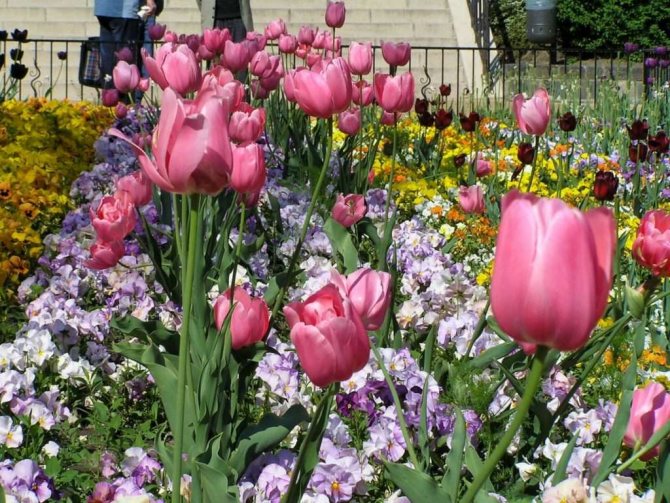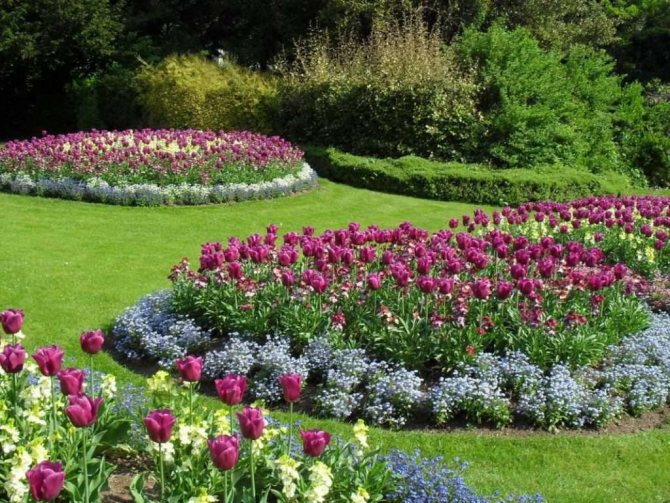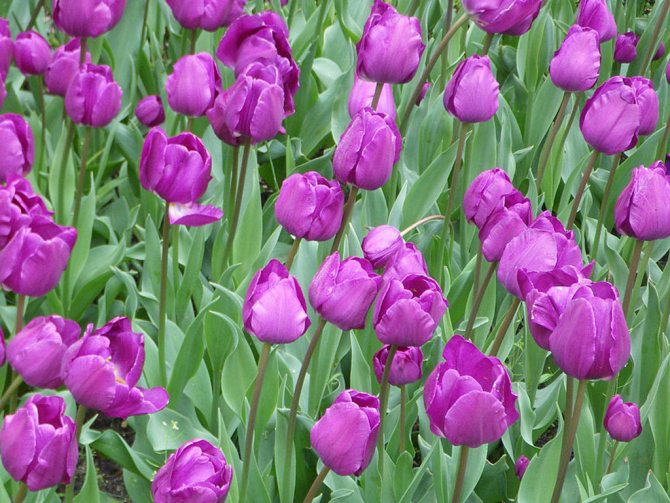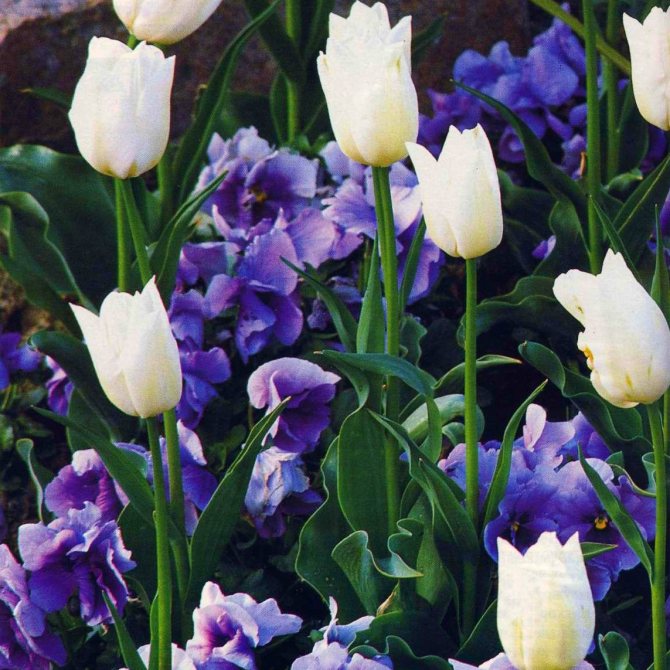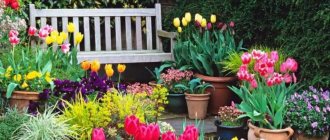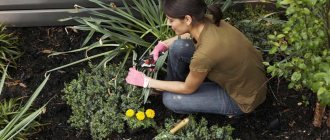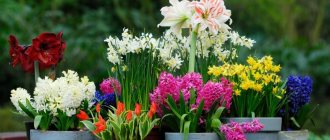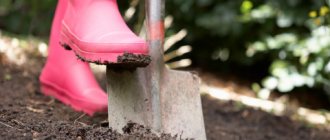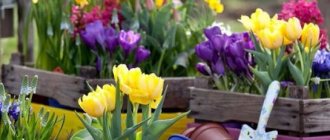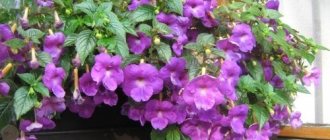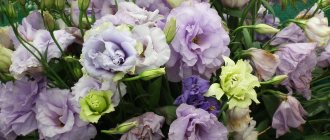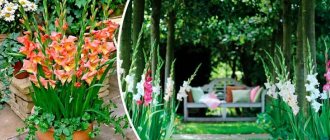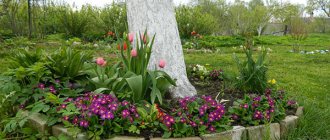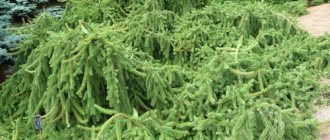Tulips cannot grow alone, they are simply created to create colorful living masterpieces. To decorate a garden plot or city square, you can try to copy someone's interesting idea, but it's more fun to create your own unique element of landscape design. To do this, just take into account a few simple rules and important tips.
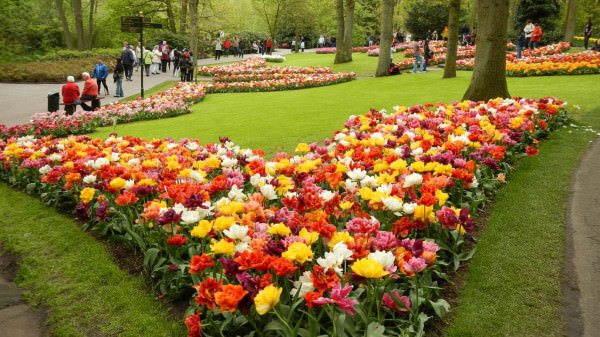
Specialist recommendations
To obtain a beautifully flowering flower bed, it is important to use only a healthy bulb, providing it with comfortable conditions. It is recommended to plant the bulb in the fall in loose soil. During spring flowering, the bulb gives up all its reserves of nutrients for flower formation and dies. At the same time, the process of forming a new bulb begins.
Experienced gardeners advise:
- cut off plants that have begun to wilt to allow the new bulb to accumulate the necessary substances faster;
- do not touch the leaves of the plant until they completely turn yellow, so as not to interfere with the accumulation of nutrients;
- with the appearance of leaves in the spring, the plant needs fertilizing with mineral fertilizers based on nitrogen, and the period of ripening of the bulb - with potash. Organic fertilizers are used only for planting.
Types of tulips planting
It is not enough to plan the color palette of the future flower bed, you need to take into account 3 more important rules of landscape design.
By groups
Planting tulips in pairs or in splendid isolation leads to the fact that they are simply lost against the general background of flower beds or other decorative garden decorations.
Thin graceful flowers acquire the necessary strength, confidence only in a group planting. That is why buying 2-3 bulbs of a new variety is considered a waste of money.
When planting tulips in groups, one of the popular options is used:
- a flower bed can look like a bright color spot, while all tulips of the same shade on it can be of different types (simple, double, fringed);
- when using colors of the same type, an unusual composition based on color contrasts can be created;
- plants of the same species look interesting when creating a smooth transition from a light shade to a bright, saturated one between the edges of the flower bed.
Height
Planting, taking into account the height of the peduncles, involves the arrangement of several different varieties of tulips on one flower bed, so that no flower is obscured by others.
In a similar way, embankments, flower beds with steps are made out.
The tallest plants should be in the background. Or they are placed in the center of a round flower bed. Tulips are planted in front of them, the peduncles of which are smaller. The first row at the very edge of the flower bed is decorated with dwarf plants.
By flowering time
It's a shame when the flower garden is transformed only for a short time. So that it always pleases with a riot of colors, it is enough to decorate it with groups of flowers with different flowering periods.
This option is possible:
- early terry varieties with some wild-growing varieties are the first to blossom,
- then comes the time of flowering varieties of Darwin hybrids, Triumph, Greig, Kaufman, Foster.
- late-flowering varieties are distinguished by a special variety, which allows you not to limit yourself in your choice.
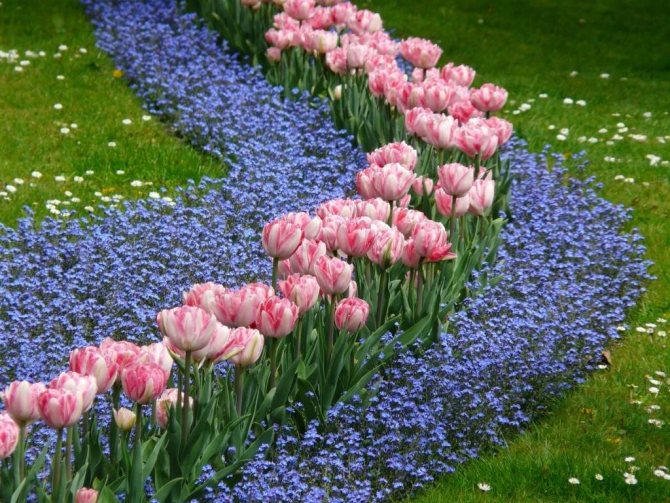

Flower garden schemes
A small composition: round, square, oblong or angular with bright colors will attract attention in the spring, until late autumn. Place it in the partial shade of trees or near the walls of buildings. Non-aggressive flowering and decorative deciduous crops are selected for the neighborhood with bulbous plants. They must be equally demanding on lighting and soil moisture. The root system of partners should be fibrous, loose and underdeveloped, since otherwise it will interfere with the development of vegetative processes in the bulbs. Such a root system occurs in arabis, aubriets, phloxes, forget-me-nots, sedums.
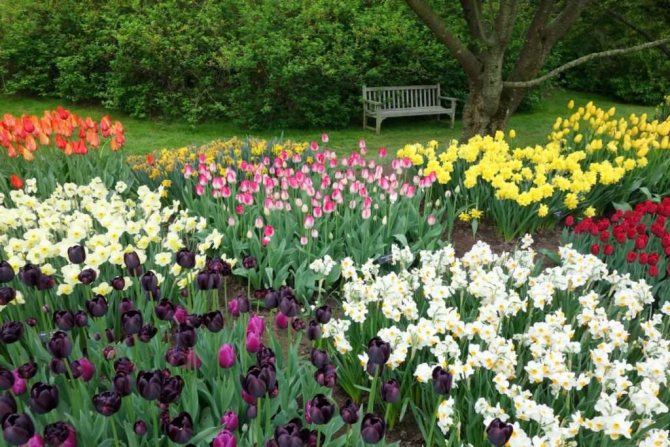

An approximate diagram of an elongated flower bed (number of plants in pieces):
- peonies are planted in the center of the composition - 3;
- to the left of the peonies - tulips - 7;
- further - liatris - 2;
- behind him - cleanings - 3;
- at the left end - host - 3;
- to the right of the peonies - dotted loosestrife - 1;
- further rhizome geranium - 5;
- behind her - Gaillardia - 1;
- further - crocuses - 10;
- at the right end - to the host - 3.
An approximate diagram of a round flower bed:
- in the center of the composition, red tulips are planted in the form of a small circle;
- make a strip of yellow daffodils around the circumference;
- the next strip in a circle made of blue hyacinths;
- behind them is a strip of scrub and mouse hyacinth in purple tones.
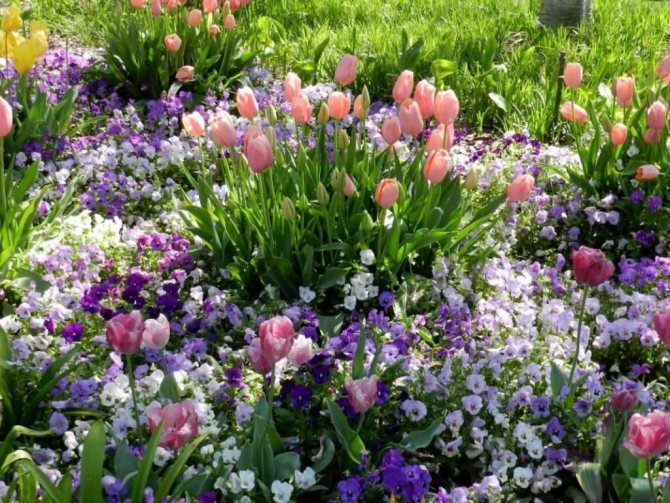

To create a personal composition at your discretion, you can use the following plants:
- thuyu western Smaragt;
- ornamental holly mahonia with evergreen foliage and dark blue fruits, it is planted in partial shade so that it does not burn in the spring sun;
- hosts (at least 3 pieces), make their way at the moment of flowering tulips, but after the phase of flowering and drying of tulips, they rise, show their beauty and cover empty spaces;
- tulips with an average flowering period of double varieties and yellow-orange or green colors;
- complete the composition of muscari made from small onions.
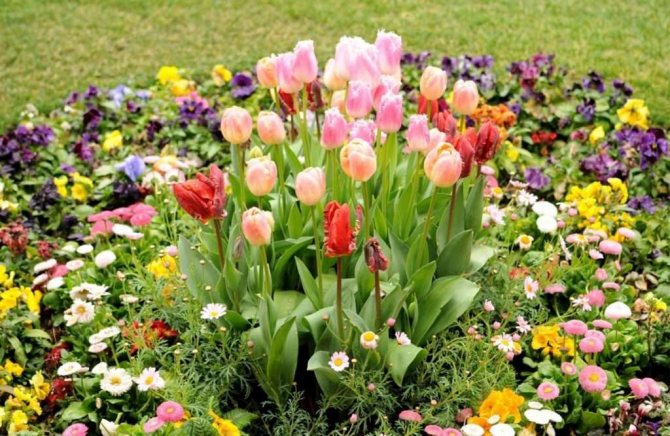

If the area for creating a composition is small - about 5m², then 5 varieties of crops are planted, no more. Border is made from undersized bulbous plants. If the flower beds are made up of perennial plants: ferns, peonies, phloxes, hosts, gypsophiles, astilbes, then small islands are left for tulips. When the bulbous flowers wither, the partners will close the dry leaves and prevent the flower bed from losing its spectacular appearance. Also read our article "When to Plant Tulips Outdoors."
The fresh and incredibly cute heads of these flowers let you know that spring is in full swing. They step on the heels of primroses, hurrying to please with bright colors and a cheerful look. To make beautiful tulip flower beds with your own hands on the shoulder of anyone, the process is not complicated and costly. These bulbous plants, which spread from Holland in the 17th century, need a suitable place and careful hands. Knowledge of agrotechnical needs, friendly partners and design solutions will help you.
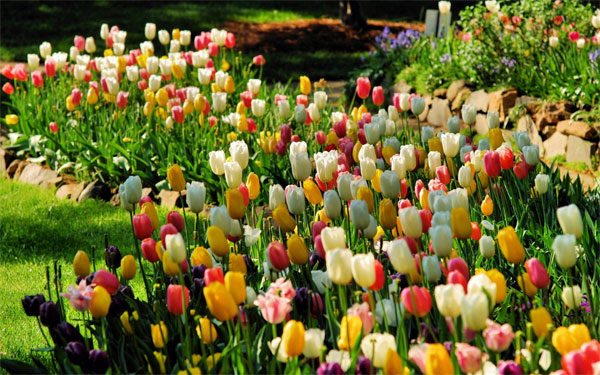

Landing features
When choosing a place to place flowers, you need to consider 2 important points:
- lighting... Tulips do not do well in the shade and on slopes.
- priming... Plants need light, fertile soil.
When faced with very dense, clayey or too wet soil, small containers for planting are the solution.They are simply filled with the necessary soil and the bulbs are planted. The containers can be purchased in specialized stores or made by yourself, for example, by taking a plastic cake lid and melting several holes in it.
Containers help solve the problem of unaesthetic plant appearance with yellowed leaves. Thanks to them, flowers can be removed from the flower bed by sending them for growing.
A good strong flower can emerge exclusively from a strong large bulb.
If the flowers remained in one place for a long time, then the bulbs could grow strongly, this is also expressed in a decrease in flowering. In this case, it is necessary to separate them, to seat them.
2 weeks before planting, you need to dig well the area intended for the flower bed and fertilize the ground with mineral fertilizer. On the appointed day, a small hole is made with a garden trowel, into which organic fertilizer and a bulb are placed. Then the hole is covered with earth, no need to ram.
Combinations with other plants
The right neighborhood not only emphasizes the charm of the flowers, but can also help create comfortable conditions for the ripening of the bulbs.
Among the most popular options for combining different types of colors are the following:
- Drought tolerant plants... The more often summer plants have to be watered, the more likely the tulip is to rot. The bulb does not mature well and may not be able to produce a strong flower in spring. In turn, plants that prefer dry soils draw excess moisture from the ground, protecting the tulips. Representatives of this group are Kachim Blizzard and Burachok.
- Hide behind the summer rampage... Bright and cheerful daisies, pansies, yellow violets or forget-me-nots gently set off the tulip's bloom, remaining a rich background and keeping the flower bed attractive even after the tulip's blooming period.
- Daffodils add showiness.
It is recommended to give preference to late flowering varieties of daffodils in order to achieve simultaneous flowering of all plants in the flower bed. - Landing under the trees... Flowers should create the illusion of wild plants, for this, only strong varieties should be chosen. They will have to independently resist weeds, frost and even excess moisture.
Such lawns can be organized only in well-lit areas; lack of light will lead to degeneration of colors.
Flowers and their neighborhood - choosing candidates: photo
1. VELVETS Perfection1 F1. The bush is compact or spreading with a pronounced main shoot and completely round densely double inflorescences up to 15 cm in diameter.The bush is powerful, strong, well branched, 35-40 cm high, 30-35 cm wide.Plants look great in borders, flower beds and beds , go well with phlox, dahlias, asters, geraniums. Flowering from late June - early July until frost.
2. BRAHICOMA is an annual plant 15-25 cm high. The bushes have numerous inflorescences with flowers 3-3.5 cm in diameter. Reed flowers are white, blue, purple or lilac-pink; tubular (smaller) - blue or almost black. Abundant bloom, from mid-June to September or October, depending on the weather.
3. CORN - a biennial or annual herb from 60 to 80 cm high. Flowers of garden forms can be white, pink, purple, red. Unpretentious, but loves sunlight, blooms from June to September. Grown in open ground in a sunlit place, the distance between individuals is 20-50 cm.
4. BEARDED DIATION - most often an annual crop up to 30 cm high, strongly branches, forming a spherical bush. The flowers are small, up to 2 cm in diameter, pink in color, of different shades, often with a yellow spot in the neck. It tolerates a lack of moisture well. therefore, it is quite suitable for planting in containers, it is widely used to decorate the borders of mixborders, the edges of flower beds and garden paths.
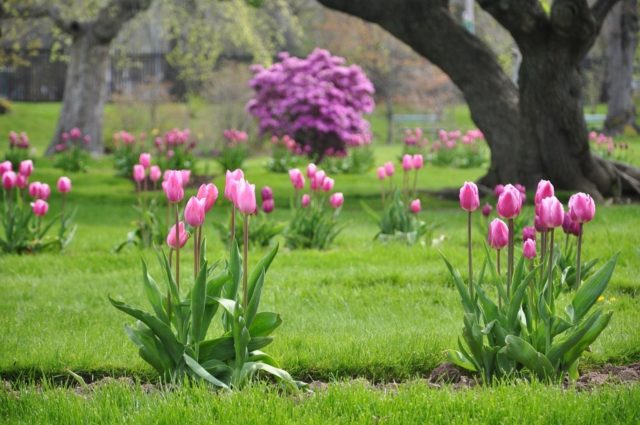

5. NEMESIA ZANOVIDNAYA - an annual plant 30-40 cm high. The flowers are bright orange, yellow, pink, red or variegated, up to 2.5 cm in diameter. This is one of the best annuals for borders or groups in prefabricated flower beds, as well as for planting in flowerpots and balcony boxes. Flowering continues until the end of September. To provoke a second wave of flowering, cut off the faded stems at a height of 15-20 cm from the ground
All bulbous early flowering plants have approximately the same requirements for the place and soil under the flower garden:
- the soil should be fertile, loose, air- and moisture-consuming, neutral acidity. The groundwater level should not rise above 60-75 cm,
- the place for the flower garden should be well lit, but at the same time protected from the sun.
In the shade of trees, a bulbous flower garden is possible if it is early flowering woodlands, hyacinths, tulips, crocuses, galanthuses, daffodils and hellebores, in which the flowering period ends before the larch trees produce dense foliage.

